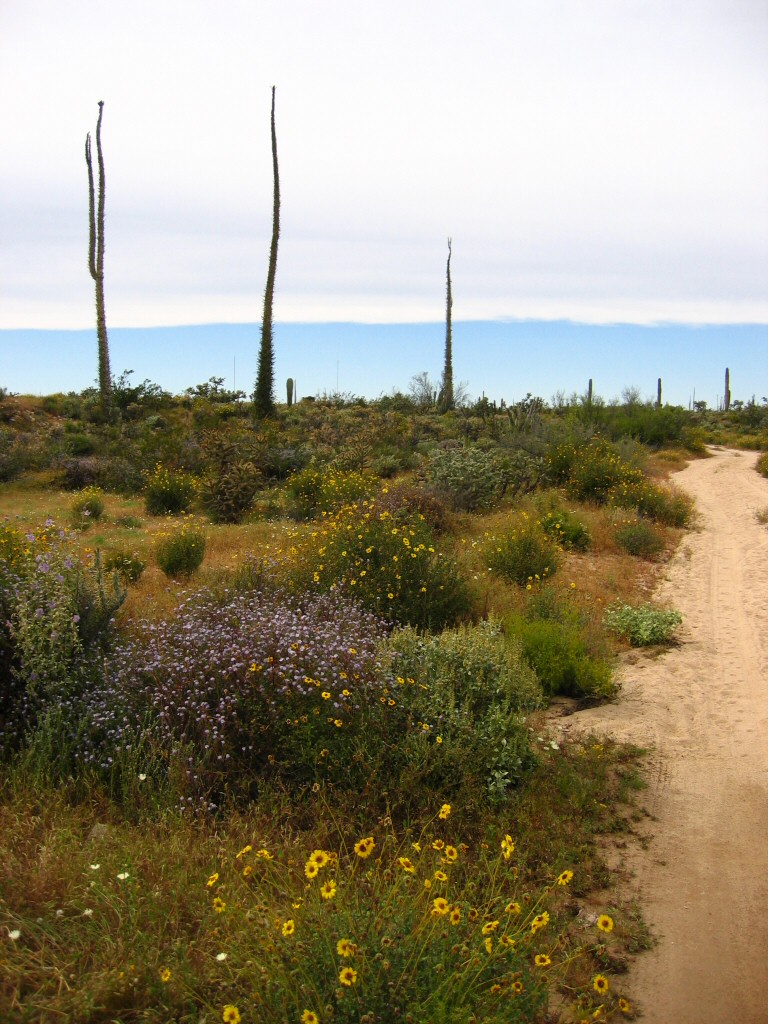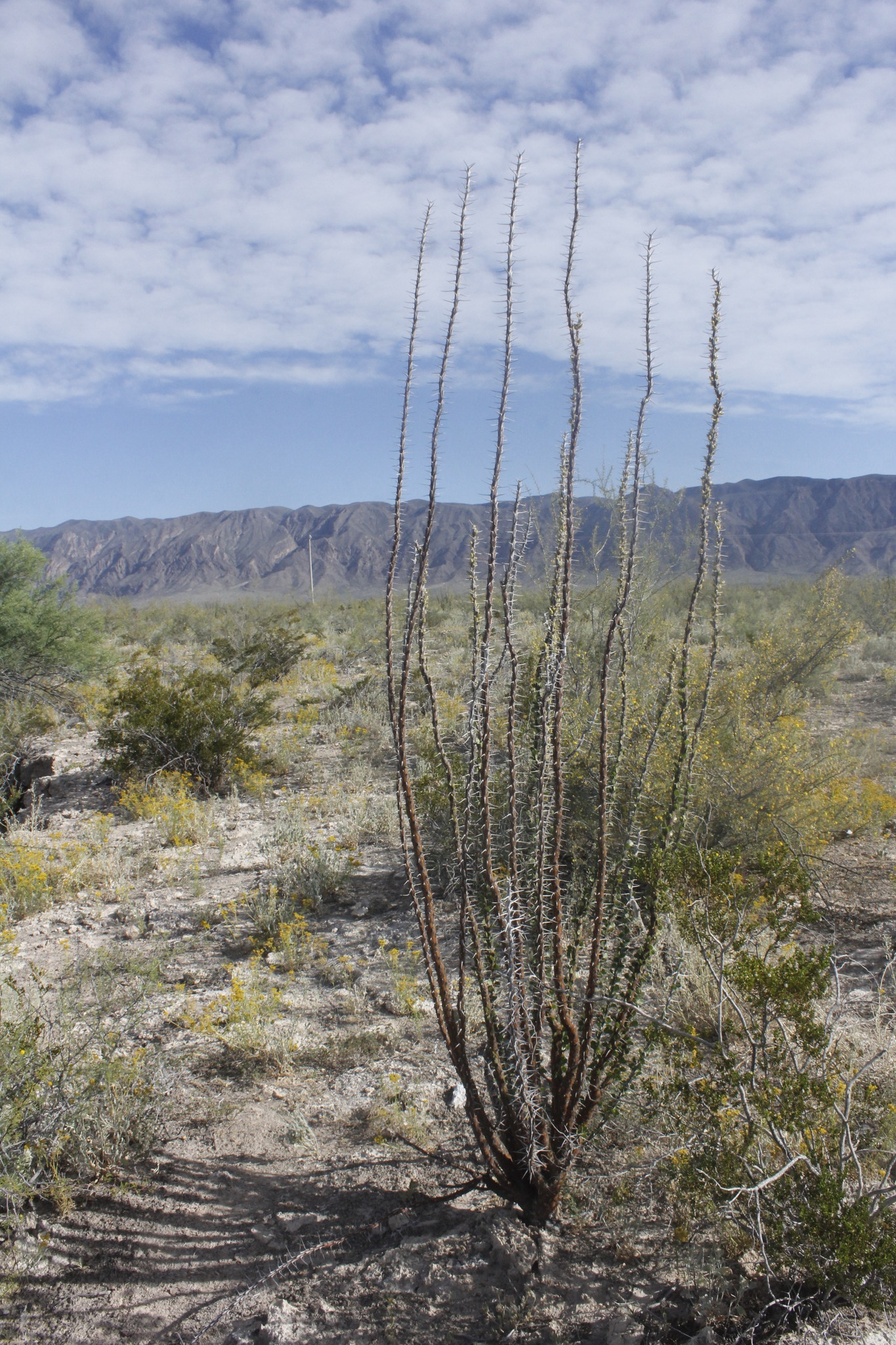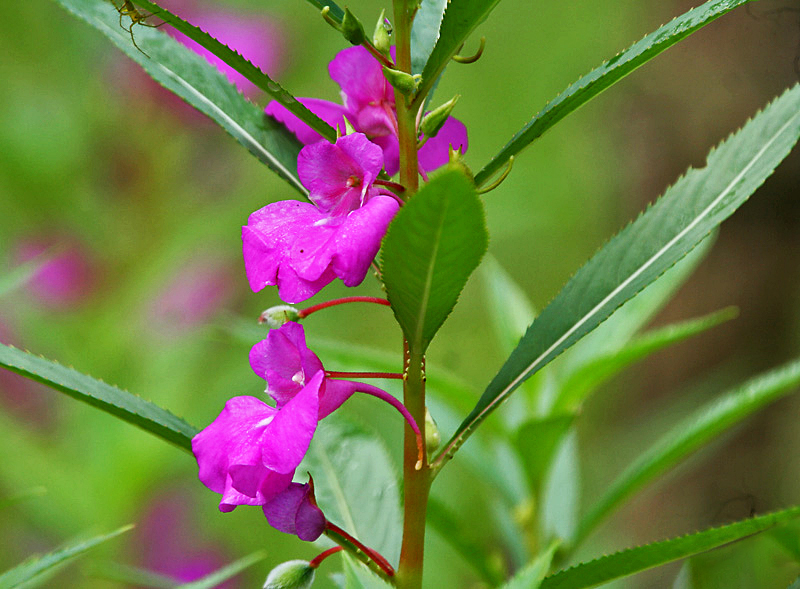|
Fouquieria
''Fouquieria'' is a genus of 11 species of desert Flowering plant, flowering plants, the sole genus in the Family (biology), family Fouquieriaceae. The genus is native to North America and includes the ocotillo (''Fouquieria splendens, F. splendens'') and the Boojum tree or cirio (''Fouquieria columnaris, F. columnaris''). They have semi succulent stems with thinner spikes projecting from them, with leaf, leaves on the bases spikes. They are unrelated to cactus, cacti and do not look much like them; their stems are proportionately thinner than cactus stems and their leaves are larger. Taxonomy Taxonomic history ''Fouquieria'' species do not have a particularly close resemblance to any other sort of plants; genetic evidence has shown they belong in the Ericales. Before this, they had been variously placed in the Violales or their own order, Fouquieriales. The Seri people identify three species of ''Fouquieria'' in their area of Mexico: ''jomjéeziz'' or ''xomjéeziz'' (''Fou ... [...More Info...] [...Related Items...] OR: [Wikipedia] [Google] [Baidu] |
Fouquieria Splendens
''Fouquieria splendens'', commonly known as ocotillo, is a plant indigenous to the Mojave Desert, Mojave, Sonoran Desert, Sonoran, Chihuahuan Desert, Chihuahuan and Colorado Desert, Colorado deserts in the Southwestern United States (southern California, southern Nevada, Arizona, New Mexico, Texas), and northern Mexico (as far south as Hidalgo (state), Hidalgo and Guerrero). Ocotilos look dessicated on the outside, but they are semi-Succulent plant, succulent; it is more closely related to the tea plant and blueberry, blueberries than to cactuses. It regenerates leaves after rainfall. They can be planted as garden ornamental plant, ornamentals. Names The name ''ocotillo'' comes from the Nahuatl word ''ocotl'' meaning "torch". It is also known as buggywhip, coachwhip, candlewood, slimwood, desert coral, Jacob's staff, Jacob cactus, and vine cactus. Botany It grows in dry, generally rocky desert soils. An ocotillo plant reaches maturity at 60–100 years, it grows to a ma ... [...More Info...] [...Related Items...] OR: [Wikipedia] [Google] [Baidu] |
Fouquieria Diguetii
''Fouquieria diguetii'', known by the common names Adam's tree,palo Adán, and Baja aliforniaTree Ocotillo, is a plant in the family Fouquieriaceae native to the southern half of the Baja California Peninsula, and the coasts of Sonora and Sinaloa. It is a semi-succulent and deciduous plant related to the ocotillo and the Boojum tree. It is distinguished by its bright red, tubular flowers, a shrub to small tree habit, and conical, paniculate inflorescences. Description Morphology This plant is a deciduous shrub arising from a short, thick trunk with branches covered in spines. It grows between 1.8 and 3 meters tall. The leaves are dark green and elliptic, and can be up to 2 cm long. The flowers are bright red in color, and attract hummingbirds. File:Fouquieriadiguetii.jpg, Detail of the trunk File:Fouquieria diguetii 173723655.jpg, Flowering among deciduous stems File:Fouquieria diguetii 27367459.jpg, Detail of inflorescence File:Fouquieria diguetii 27367456.jpg, Plants ... [...More Info...] [...Related Items...] OR: [Wikipedia] [Google] [Baidu] |
Fouquieria Columnaris
''Fouquieria columnaris'', the Boojum tree or ''cirio'' () is a tree in the ocotillo family, whose other members include the ocotillos. Some taxonomists place it in the separate genus ''Idria''. It is nearly endemic to the Baja California Peninsula (both the northern and southern states), with only a small population in the Sierra Bacha of Sonora, Mexico. The plant's English name, Boojum, was given by Godfrey Sykes of the Desert Laboratory in Tucson, Arizona, and is taken from Lewis Carroll's poem "The Hunting of the Snark". Description This plant is a columniform, upwardly tapering tree. The central axis of the plant is homologous to the single stem of other species. It has a cortical water-storage network, a feature unique to the family. The ''Fouquieria columnaris'' trunk is up to 24 inches (61 centimeters) thick, off-white in color, with few or no major branches and with numerous thin, twiggy branches sticking out at right angles, all covered with small leaves long. They ... [...More Info...] [...Related Items...] OR: [Wikipedia] [Google] [Baidu] |
Boojum Tree
''Fouquieria columnaris'', the Boojum tree or ''cirio'' () is a tree in the Fouquieriaceae, ocotillo family, whose other members include the ocotillos. Some taxonomists place it in the separate genus ''Idria''. It is nearly endemic (ecology), endemic to the Baja California Peninsula (both the northern and southern states), with only a small population in the Sierra Bacha of Sonora, Mexico. The plant's English name, Boojum, was given by Godfrey Sykes of the Desert Laboratory in Tucson, Arizona, and is taken from Lewis Carroll's poem "The Hunting of the Snark". Description This plant is a columniform, upwardly tapering tree. The central axis of the plant is homologous to the single stem of other species. It has a cortical water-storage network, a feature unique to the family. The ''Fouquieria columnaris'' trunk is up to 24 inches (61 centimeters) thick, off-white in color, with few or no major branches and with numerous thin, twiggy branches sticking out at right angles, all covere ... [...More Info...] [...Related Items...] OR: [Wikipedia] [Google] [Baidu] |
Fouquieria Formosa
''Fouquieria formosa'' is a species of perennial plant in the genus ''Fouquieria'', known by the vernacular names palo santo, rabo de iguana, rosalillo, tlapacon, corona de Cristo and flor de jabon. It is native to central and southern Mexico (Chiapas, Oaxaca, Guerrero, Puebla, Morelos, Michoacán, México State, Distrito Federal, Jalisco).Global Biodiversity Information Facility''Fouquieria formosa''/ref>McVaugh, R. 2001. Ochnaceae to Loasaceae. 3: 9–751. In R. McVaugh (ed.) Flora Novo-Galiciana. The University of Michigan, Ann Arbor Description ''Fouquieria formosa'' is a small tree growing to 8 m in height with hummingbird-pollinated flowers. [...More Info...] [...Related Items...] OR: [Wikipedia] [Google] [Baidu] |
Fouquieria Shrevei
''Fouquieria shrevei'' is a plant species native to the States of Coahuila and Durango states of northeastern Mexico. It is simply referred to as an ocotillo. It is endemic to some scattered gypsum outcroppings in the Bolsón de Mapimí, where the low rainfall, hot climate and gypseous soil work to create a restrictive environment. It has flowers with short, white corollas that distinguish it from the nearby ''Fouquieria splendens''. Description ''Fouquieria shrevei'' is a shrub up to tall, branching repeatedly near the base but hardly at all above. Leaves are ovate to oblanceolate, up to long and wide, with scarious (thin, dry and brown) margins. Flowers are white, born in short racemes in the axils of the leaves. The board leaves plus the axillary racemes of white flowers make this a distinctive and unusual member of the genus. Etymology Because this species occurs sympatric with ''Fouquieria splendens'', the plant is not distinguished and is simply referred to as an "o ... [...More Info...] [...Related Items...] OR: [Wikipedia] [Google] [Baidu] |
Ericales
The Ericales are a large and diverse order of flowering plants in the asterid group of the eudicots. Well-known and economically important members of this order include tea and ornamental camellias, persimmon, ebony, blueberry, cranberry, lingonberry, huckleberry, kiwifruit, Brazil nut, argan, sapote, azaleas and rhododendrons, heather, heath, impatiens, phlox, Jacob's ladder, primroses, cyclamens, shea, sapodilla, pouterias, and trumpet pitchers. The order includes 22 families, according to the APG IV system of classification. The Ericales include trees, bushes, lianas, and herbaceous plants. Together with ordinary autophytic plants, they include chlorophyll-deficient mycoheterotrophic plants (e.g., '' Sarcodes sanguinea'') and carnivorous plants (e.g., genus '' Sarracenia''). Mycorrhizal associations are quite common among the order representatives, and three kinds of mycorrhiza are found exclusively among Ericales (namely, ericoid, arbutoid and monotro ... [...More Info...] [...Related Items...] OR: [Wikipedia] [Google] [Baidu] |
Succulent
In botany, succulent plants, also known as succulents, are plants with parts that are thickened, fleshy, and engorged, usually to retain water in arid climates or soil conditions. The word ''succulent'' comes from the Latin word ''sucus'', meaning "juice" or "sap". Succulents may store water in various structures, such as leaves and stems. The water content of some succulent organs can get up to 90–95%, such as '' Glottiphyllum semicyllindricum'' and '' Mesembryanthemum barkleyii''. Some definitions also include roots, thus geophytes that survive unfavorable periods by dying back to underground storage organs (caudex) may be regarded as succulents. The habitats of these water-preserving plants are often in areas with high temperatures and low rainfall, such as deserts, but succulents may be found even in alpine ecosystems growing in rocky or sandy soil. Succulents are characterized by their ability to thrive on limited water sources, such as mist and dew, which makes them ... [...More Info...] [...Related Items...] OR: [Wikipedia] [Google] [Baidu] |
Tuckerella Eloisae
The peacock mites of the genus ''Tuckerella'' ( the only genus of the mite family Tuckerellidae) are a significant herbivorous pest in the tropics, for example on citrus fruit. Other species dwell in grasses, possibly as root feeders. The peacock mite's name suggests that their feather-like (or leaf-like) setae adorning their backs are evocative of a peacock's plumage. They also have long hair-like setae projecting from rear ( caudal setae) that have been compared to a trailing peacock tail. The 5–7 pairs of caudal setae can be flicked over the body very quickly, so they are used like whips in defense against predators. They may also help in wind-borne dispersal. They are classified in the superfamily Tetranychoidea, being its most ornate members. Species * '' Tuckerella anommata'' Smith-Meyer & Ueckermann, 1997 (South Africa) * '' Tuckerella channabasavannai'' Mallik & Kumar, 1992 (host: ''Saraca indica''; Andhra Pradesh) * '' Tuckerella eloisae'' Servin & Otero, 1989 ( ... [...More Info...] [...Related Items...] OR: [Wikipedia] [Google] [Baidu] |
Violales
Violales is a botanical name of an order of flowering plants and takes its name from the included family Violaceae; it was proposed by Lindley (1853). The name has been used in several systems, although some systems used the name Parietales for similar groupings. In the 1981 version of the influential Cronquist system, order Violales was placed in subclass Dilleniidae with a circumscription consisting of the families listed below. Some classifications such as that of Dahlgren placed the Violales in the superorder Violiflorae (also called Violanae). The Angiosperm Phylogeny Group (APG) system does not recognize order Violales; Violaceae is placed in order Malpighiales and the other families are reassigned to various orders as indicated. * order Violales Perleb 1826 *: family Achariaceae → order Malpighiales *: family Ancistrocladaceae → order Caryophyllales *: family Begoniaceae → order Cucurbitales *: family Bixaceae → order Malvales *: family Caricaceae → order Br ... [...More Info...] [...Related Items...] OR: [Wikipedia] [Google] [Baidu] |
Seri People
The Seri or ''Comcaac'' people are an Indigenous group of the Mexican state of Sonora. The majority reside on the Seri communal property (), in the towns of Punta Chueca () and El Desemboque () on the mainland coast of the Gulf of California. Tiburón Island (''Tahejöc'') and San Esteban Island (''Cofteecöl'' and sometimes ''Hast'') were also part of their traditional territory. They maintain an intimate relationship with both the sea and the land. They are one of the ethnic groups of Mexico that has most strongly maintained their language and culture throughout the years after contact with Spanish and Mexican cultures. The Seri people are not related culturally or linguistically to other groups that have lived in the area, such as the Opata, Yaqui (sg.: ''Yequim'', pl.: ''Yectz''), O'odham (sg.: ''Hapaay''), or Cochimí. The Seri language is distinct from all others in the region and is considered a language isolate. Beside the Apache (sg.: ''Hapats'', pl.: ''Hapats ... [...More Info...] [...Related Items...] OR: [Wikipedia] [Google] [Baidu] |







